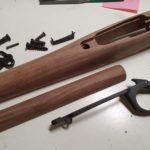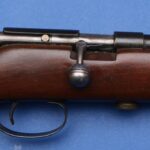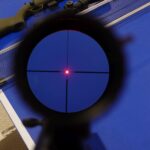Most hunters take big game at 25-125M. What do you need to do if you want to shoot further than that?
Spitting distance: 0-125M
For the typical distance that most hunters take big game, you don’t need much.
Rifle: most any centerfire rifle will work. A scope is not required but will make shot placement a bit easier at around 100.
Cartridge: even lower power cartridges like 30-30 or 7.62×39 are fine for deer or elk but you might want a heavier bullet for Elk.
Skills: Basic marksmanship will do. If you have a good rest, ANY hunter can make a shot at this distance
Short range: 100-300M
Rifle: At this range, a scope is now a requirement. You’ll also need a rifle that can keep shots within 1.5-2 MOA.
Cartridge: At closer to 300, you shouldn’t be using lower power cartridges, especially on larger game like Elk/Moose
Skills: We’re now outside the capabilities of a basic marksman unless they have a very steady rest. A capable marksman can make these shots from prone and may be able to take them from seated/kneeling. You’ll also need to be able to tell when your game is at 300 vs 200 so that you can perform appropriate hold overs.
Medium range: 300-600M
Rifle: At this range, you’ll need a rifle that is very accurate: 1MOA or better. You’ll need confirmed dope: calculate, then test bullet drop at a variety of distances at the range
Cartridge: For deer, most popular cartridges will bring enough energy. For Elk/Moose, you’ll want to step up to a magnum cartridge (300 win mag, 7mm rem mag)
Skills: Hunting at these ranges are beyond most hunter’s abilities. You’ll need to lase out your game’s distance, calculate the drop, and hold over on your reticle or dial it in. You’ll also need a pretty solid rest: sandbags, bipod or an adjustable rest.

Long range: 600-900M
Rifle: Heavy barrel, match rifle, 0.5-0.75MOA
Cartridge: Magnum. Might need something handloaded to get the accuracy needed. You’ll need confirmed dope: calculate, then test bullet drop at a variety of distances at the range
Skills: This is well beyond what most hunters can do. The type of person to be confident in a shot at this distance is likely a regular long distance competition shooter using their competition rifle. The time required to have equipment and skills ready for a shot at this distance is intense.
Note: at this distance, even someone with everything going right for them may miss if they’re shooting in windy conditions.
Extreme Long Range (ELR) Hunting: 900M+
Rifle: Custom, heavy, something completely unsuitable for hunting but great for long range target shooting. Ridiculous accuracy at range is required.
Cartridge: Big, lots of powder, handloaded for maximum precision. 375 CheyTac, 300 Norma, 416 Barrett, maybe 300 win mag,
Skills: You’d have to be an ELR enthusiast AND be ok with not hitting your game to want to take this kind of shot. Even with everything going right and a super accurate rifle, you can’t guarantee that the bullet will land in the 6″ circle at these distances.
What’s the right max hunting range for me?
If you’re a new hunter with an accurate, scoped, bolt action rifle, keep your shots within 200 meters. Go to the range, practice shooting vitals-sized targets (6″ round) at different distances from different positions as you will be hunting. There probably won’t be a bench when you shoot, so practice seated, prone with a bipod, seated with a bipod, etc. When you can’t consistently make the hits, that’s your max range for that position.
My cheat for maximum hunting precision
2 words: seated bipod. I find that prone bipods are almost useless where I hunt: you can’t see over grass/snow and you can’t aim up very well. Seated bipods can be used more comfortably, you can rotate, and they add a tremendous amount of stability. They’re practical to use up to medium-range, and that’s plenty.
I used my seated bipod this year to heart-shot a deer at 300M. The stability was incredible and I had no doubt that deer was going down.







